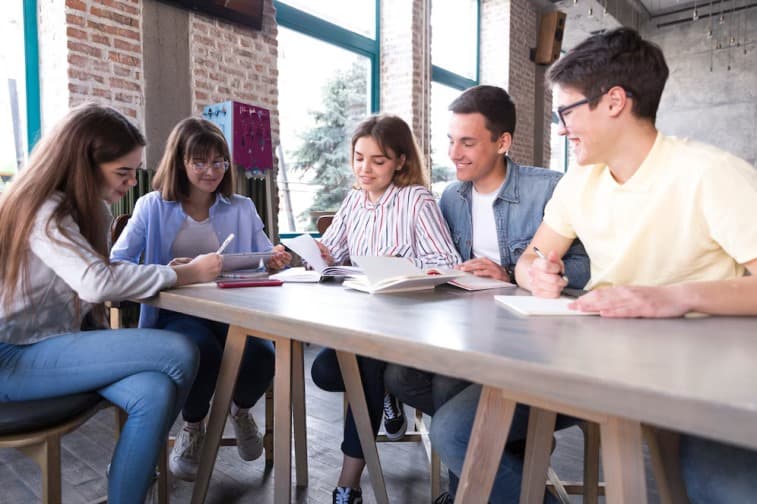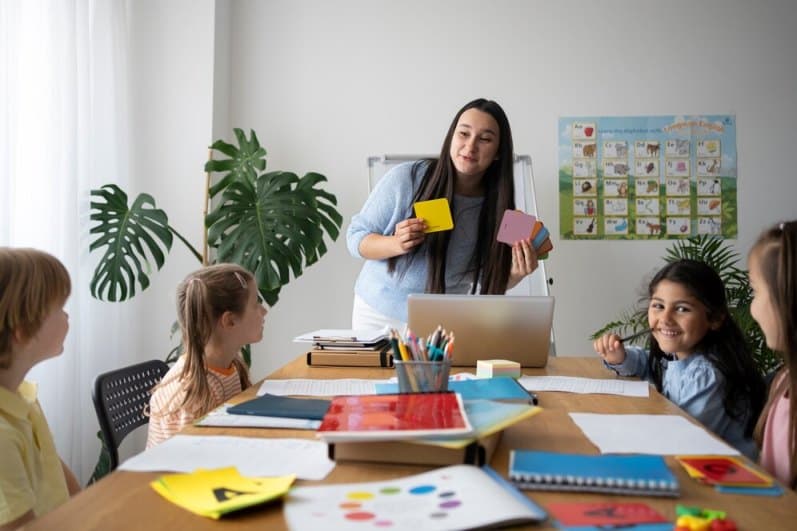The Jigsaw method promotes collaboration and active learning. Teachers divide a topic into segments and assign each segment to a different group member. These members then research their segments and share their findings with their group. This approach ensures that all students participate and engage with the material.
It encourages teamwork, improves communication skills, and enhances understanding. The method also fosters a sense of responsibility as each student’s contribution is crucial. By teaching their peers, students reinforce their own learning. The Jigsaw method is an effective, interactive, and student-centered teaching strategy.
What is the Jigsaw Method?
Jigsaw promotes collaborative learning by dividing students into groups, each tackling different segments of a topic. Students then teach their segment to peers, ensuring comprehensive understanding for everyone. The technique is called “jigsaw” because, much like the pieces of a jigsaw puzzle, each student is responsible for a different part of the material, and only when they come together can the full picture be completed.
The Jigsaw method began in the 1970s. It was created by a professor named Elliot Aronson. This method helps students learn in groups. Each student becomes an expert on a topic. Then, they teach their group members. This way, everyone learns from each other. The method promotes teamwork and understanding.
The main goal of the Jigsaw method is to improve learning. It makes students work together. They share what they know. This helps everyone understand better. The method also builds social skills. Students learn to listen and communicate. They work as a team. This makes learning fun and effective.
See Also: Advantages And Disadvantages Of Reflective Teaching
Benefits of the Jigsaw Method
The Jigsaw strategy offers numerous benefits, particularly in fostering an engaging and supportive learning environment:
Promotes Active Learning
The method transforms students from passive listeners into active participants. Each student is held accountable for mastering and teaching their assigned material, encouraging deeper engagement with the content.
Develops Communication and Social Skills
As students work in groups, they must communicate effectively and collaborate to ensure the success of the entire team. These interactions enhance communication skills, problem-solving abilities, and the ability to listen and learn from peers.
Reduces Competition and Fosters Cooperation
In contrast to traditional competitive environments, the Jigsaw method emphasizes cooperation. The success of the group depends on each member’s contribution, encouraging students to support one another and build a sense of community in the classroom.
Enhances Retention of Knowledge
When students teach others, they reinforce their own understanding of the material. This peer-teaching aspect is key to the Jigsaw method’s success, as it helps students retain knowledge more effectively than traditional lecture-based methods.
Accommodates Diverse Learners
The Jigsaw method is particularly effective in classrooms with diverse learners. By allowing students to take ownership of their learning and work at their own pace, the method ensures that students with varying abilities and learning styles can participate meaningfully.
Step-by-Step Guide to Implementing the Jigsaw Method
Now that we’ve explored the core components and benefits, let’s look at a step-by-step process for implementing the Jigsaw method in your classroom.
Step 1: Divide the Class into Jigsaw Groups
Start by dividing your class into small groups, typically between 4-6 students. These are the jigsaw groups, and each group will eventually come together to form a comprehensive understanding of the learning material.
Step 2: Assign Learning Material
Divide the learning content into the same number of sections as there are students in each group. Each student is then assigned one section of the material to become an expert on.
Step 3: Form Expert Groups
Students with the same material meet in expert groups. This phase is crucial, as it gives students the opportunity to discuss, analyze, and master their specific topic. They can ask questions, clarify doubts, and work together to build a strong understanding of their section.
Step 4: Return to Jigsaw Groups
Once the expert groups have thoroughly studied their material, students return to their original jigsaw groups. In this step, each student is responsible for teaching their section of the material to the rest of the group.
Step 5: Collaborative Learning
As students teach each other, they begin to piece together the entire lesson. This collaborative process allows for peer learning, where students can ask questions and clarify points, ensuring that everyone understands the full scope of the material.
Step 6: Evaluation and Reflection
To reinforce learning, it’s important to assess students on both the content they studied and their ability to communicate it effectively to their peers. Consider including group discussions, quizzes, or reflective activities to assess understanding and retention.
What Material Can Be Used in the Jigsaw Method?
The material used for jigsaw activities needs to be carefully selected to ensure it suits the technique’s cooperative learning structure. Here are examples of types of materials that work well:
Text-based Materials
Chapters from textbooks, research articles, or essays can be divided into sections for each student to focus on. This is commonly used in subjects like history, literature, or social studies.
Data Sets and Graphs
In subjects like math or science, students can work on different data sets or graphs and then come together to compare results or findings.
Case Studies
Case studies, especially in subjects like business, medicine, or law, can be split into parts (e.g., background, problem analysis, proposed solutions). Each group member can tackle a different part.
Thematic Sections
In language classes, sections could involve different grammatical rules, vocabulary, or writing techniques. Students could become experts in different language skills and then teach their peers.
Experiments or Project Steps
In practical subjects like chemistry or engineering, different steps in an experiment or project can be assigned to different students. Each student becomes an expert in their specific step and later explains it to their group.
Digital Resources
Videos, online articles, and podcasts can also be used. Each student may watch or listen to different segments and then teach the key points to their group.
Read Also: Characteristics And Importance Of Osmosis Learning
Best Practices for Using the Jigsaw Method
To maximize the effectiveness of the Jigsaw method, consider the following best practices:
- Clear Instructions: Make sure that students understand both their roles as experts and their responsibilities within the group. Providing rubrics or guidelines can help keep students on track.
- Facilitate Discussion: As the teacher, circulate through the groups to facilitate discussions, encourage quieter students, and provide guidance when necessary.
- Assessment and Feedback: Regularly assess not just the final product, but the process of peer teaching and collaboration. Offer constructive feedback to help students improve both their knowledge and their ability to work in teams.
Challenges of the Jigsaw Method
While the Jigsaw method is a powerful tool for classroom learning, it comes with certain challenges that educators need to address for it to work effectively.
Unequal Participation
In some cases, stronger students may dominate the discussion, while quieter or less confident students may contribute less. To combat this, educators should provide clear guidelines on group roles and responsibilities and monitor group dynamics to ensure balanced participation.
Time-Intensive
Implementing the Jigsaw method can be more time-consuming than traditional teaching methods. Teachers must carefully plan the lesson, allow time for expert group discussions, and ensure that the collaborative learning process isn’t rushed.
Reliance on Peer Learning
In the jigsaw method, students rely heavily on their peers for learning the full material. If one student fails to teach their piece effectively, the rest of the group may suffer in understanding.
Assessment Difficulty
Evaluating individual student contributions can be tricky. Since students are learning from peers, it can be hard to determine whether they have a full grasp of the material or if some gaps remain due to poor peer instruction.
Requires Teacher Oversight
While the method emphasizes student independence, teacher oversight is still necessary to ensure that each student grasps the material and can teach it effectively. Teachers should be prepared to step in if a group struggles with comprehension or communication.
Conclusion
Implementing the jigsaw method in classrooms fosters collaboration and improves understanding. It encourages active participation and teamwork.
Students learn from each other, enhancing their communication skills. Teachers find it effective for diverse learning styles. Overall, the jigsaw technique creates a dynamic and inclusive learning environment, benefiting both students and educators.



